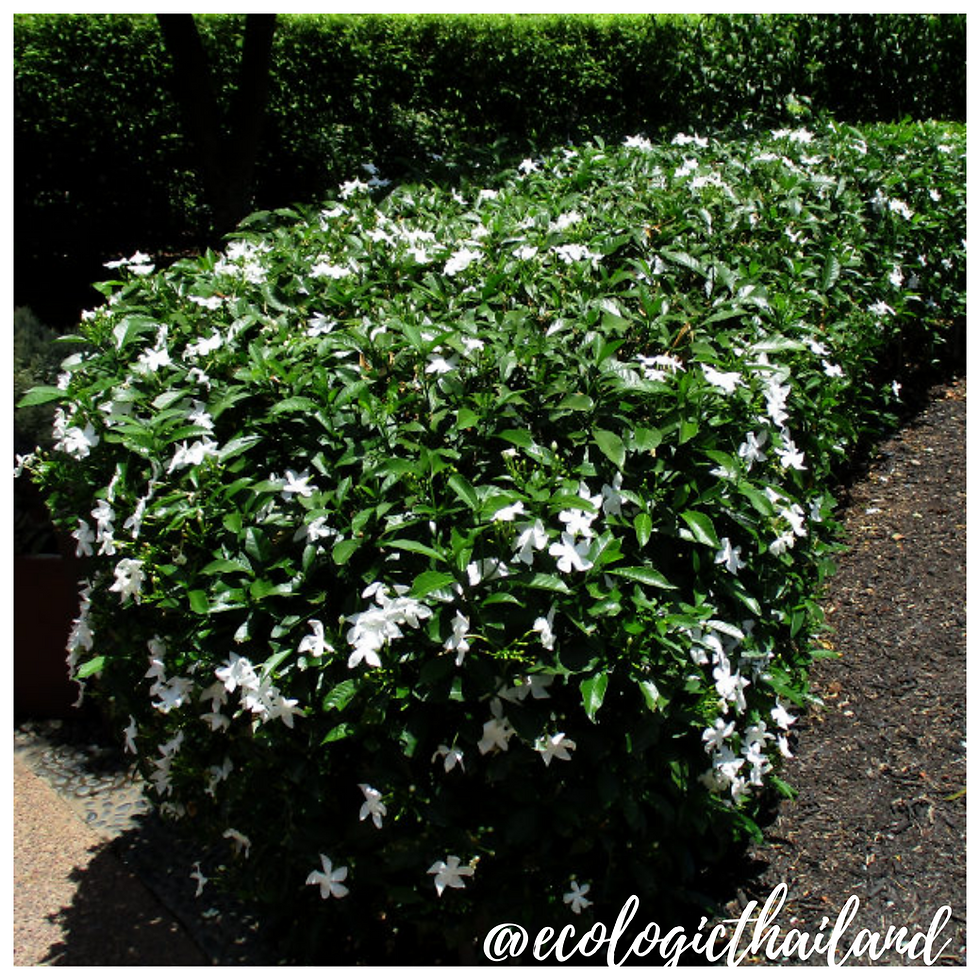Pomelo
- Eco-Logic Resort
- Apr 12, 2021
- 2 min read
Som oh | ส้มโอ | Citrus maxima
Family: Rutaceae - Genus: Citrus

There are few Pomelo trees in Paksong area.
The pomelo is a natural, i.e., non-hybrid, citrus fruit, native to Southeast Asia. The fruit is similar in taste to a large grapefruit. The pomelo is commonly consumed and used for festive occasions throughout Southeast Asia.
The word "pomelo" derived from Dutch pompelmoes. In English, the word "pomelo" has become the more common name, although "pomelo" has historically been used for grapefruit.
In large parts of Southeast Asia where pomelo is native, it is a common dessert, often eaten raw and sprinkled with, or dipped in, a salt mixture. It is eaten in salads.
Pomelo trees have fruit from August to October.

THE TREE
The pomelo tree can be 5 to 15 meter tall, with a crooked trunk 10–30 centimeter thick, and low-hanging, irregular branches

THE LEAVES
The leaves of the pomelo are distinctly winged, with alternate, elliptic shapes 5 to 20 centimeter long, with a leathery, dull green upper finish, and hairy lower leaf.

THE FLOWERS
The flowers of the pomelo — single or in clusters — are fragrant and yellow-white in color.

THE FRUIT
The pomelo fruit is a large citrus fruit, 15–25 centimeter in diameter, weighing 1 to 2 kilogram. It has a thicker rind than a grapefruit. Containing 11–18 segments, the flesh tastes like a mild grapefruit. The enveloping membranous material around the segments is bitter, considered inedible, and usually discarded.
CULINARY USES
There are two varieties of Pomelo: a sweet kind with white flesh, and a sour kind with pinkish flesh, the latter more likely to be used as a ceremony, rather than eaten. The fruit generally contains few, relatively large seeds,
The juice is regarded as delicious, and the rind is used to make preserves or may be candied.
NUTRITION
Raw pomelo flesh is 89% water, 10% carbohydrates, 1% protein, and contains negligible fat (table). A 100 gram reference amount provides 38 calories, and is rich in vitamin C (73% of the Daily Value).
TRADITIONAL MEDICINAL USE
NOTE: please take advice from a doctor if you are planning to use herbal medicine.
Pomelo skin is also used medicinally in some cultures, it is said to have many healt benift.. The Chinese could make various medicines by drying various parts of the fruits like its seeds, flowers, mature peel and slices of young pomelo fruit then combining it with other ingredients.
It is used to treat cough, indigestion and motion sickness.
INTO THE WILD: a down to earth experience

For guests and visitors to Paksong we organize weekly tours "The Edible Forest" and Foraging weekends: Into the Wild. We work with local guides to take you in the jungle of Paksong. After foraging, we will cook a meal with the ingredients, using bamboo together with you!
Come and join and learn about the abundance of food that nature gives us!
INTO THE WILD!


















Comments